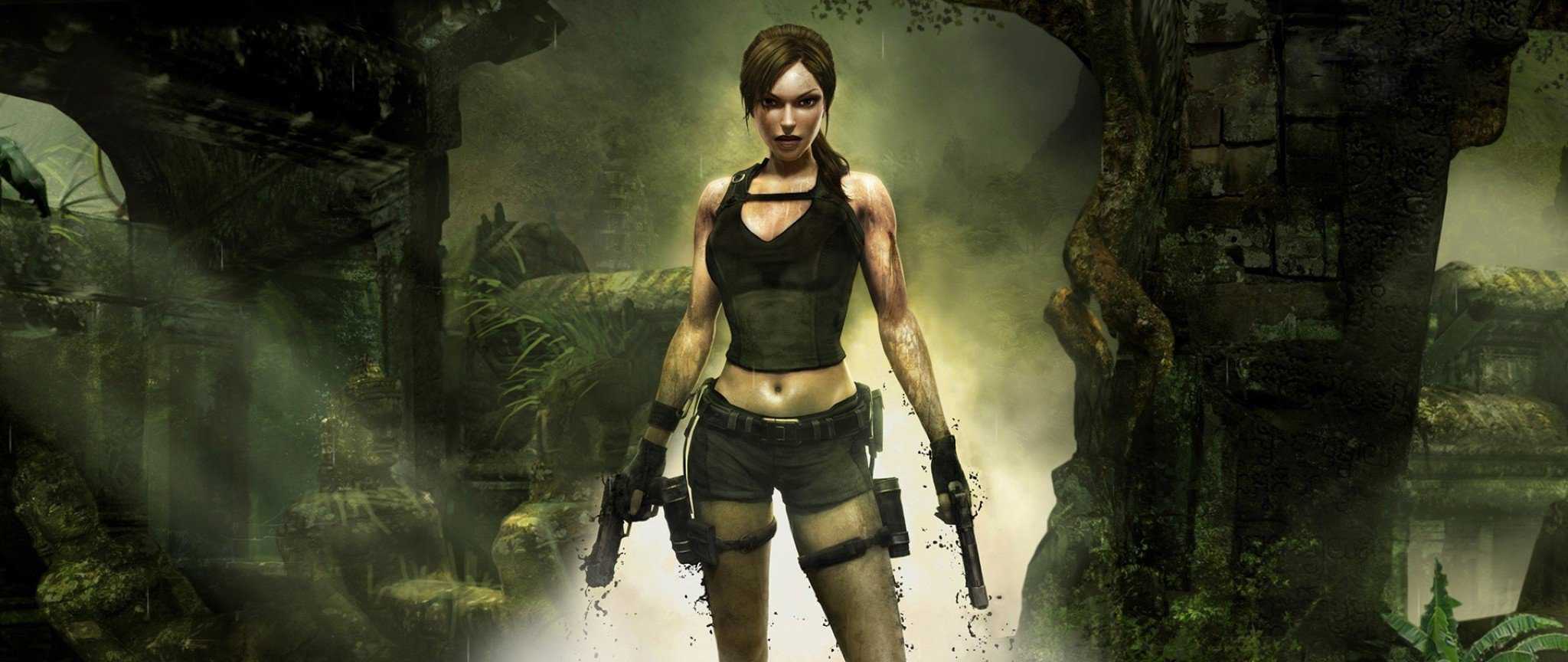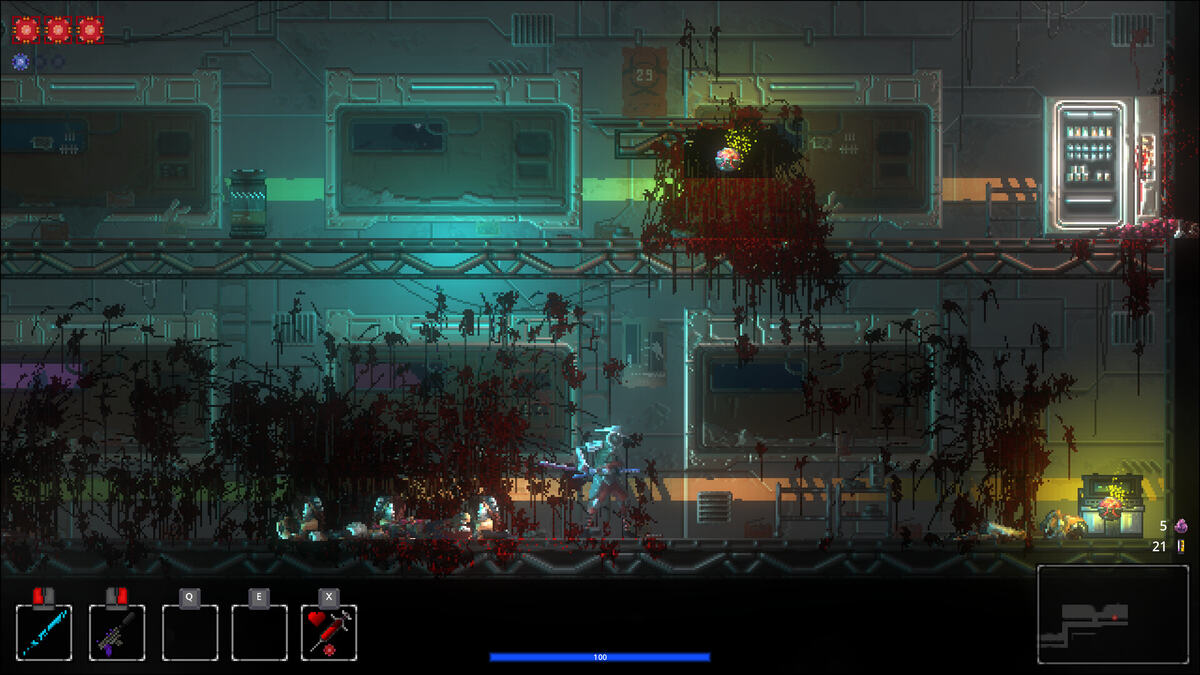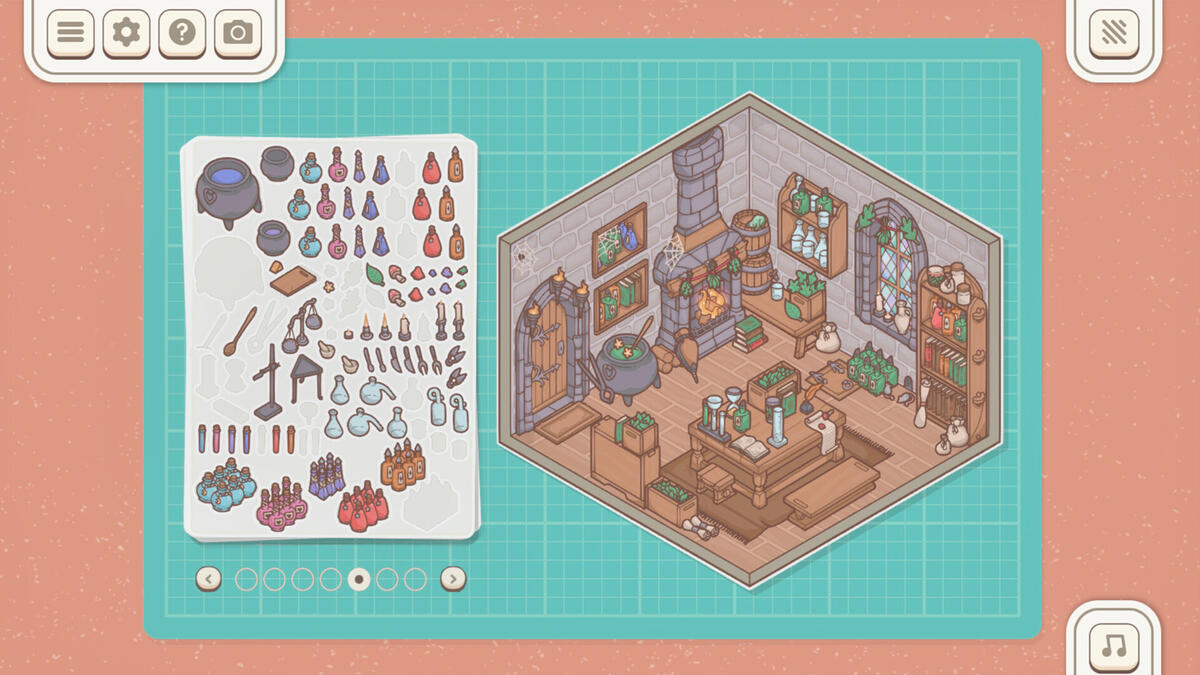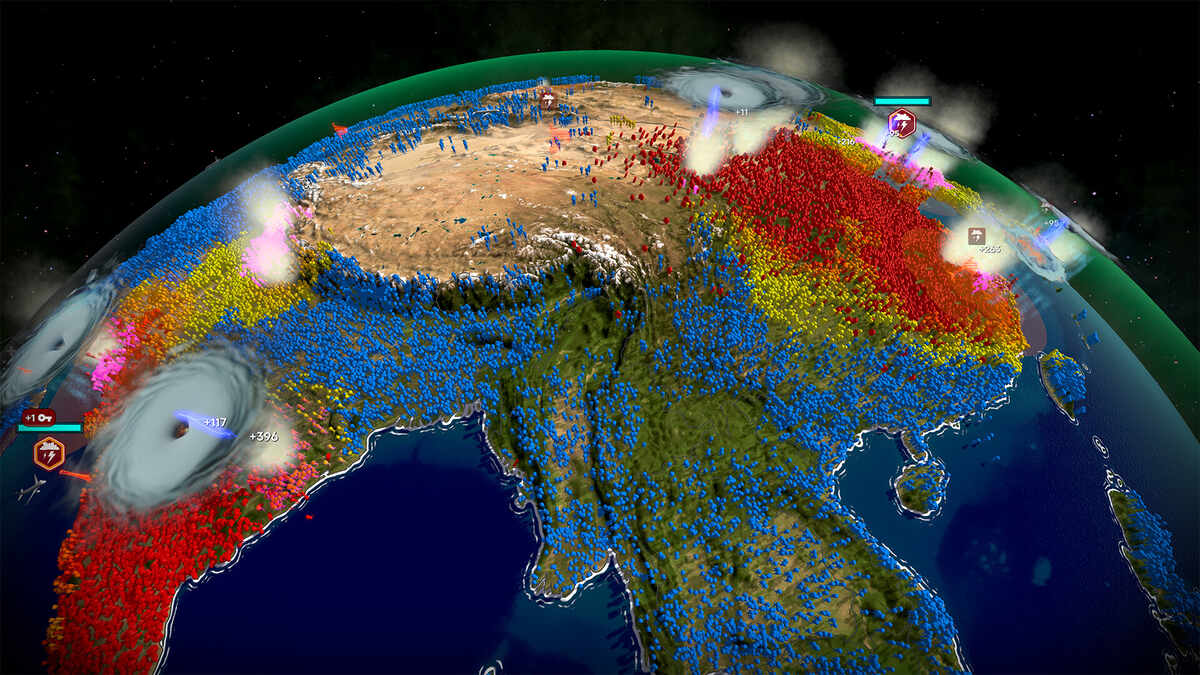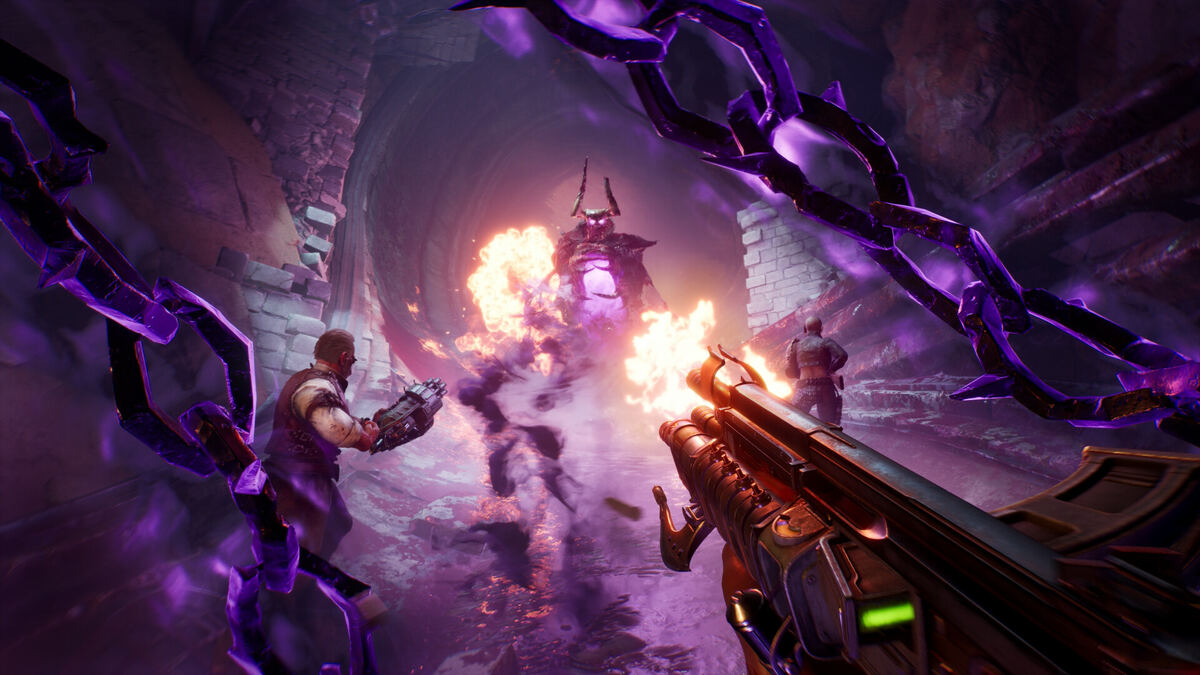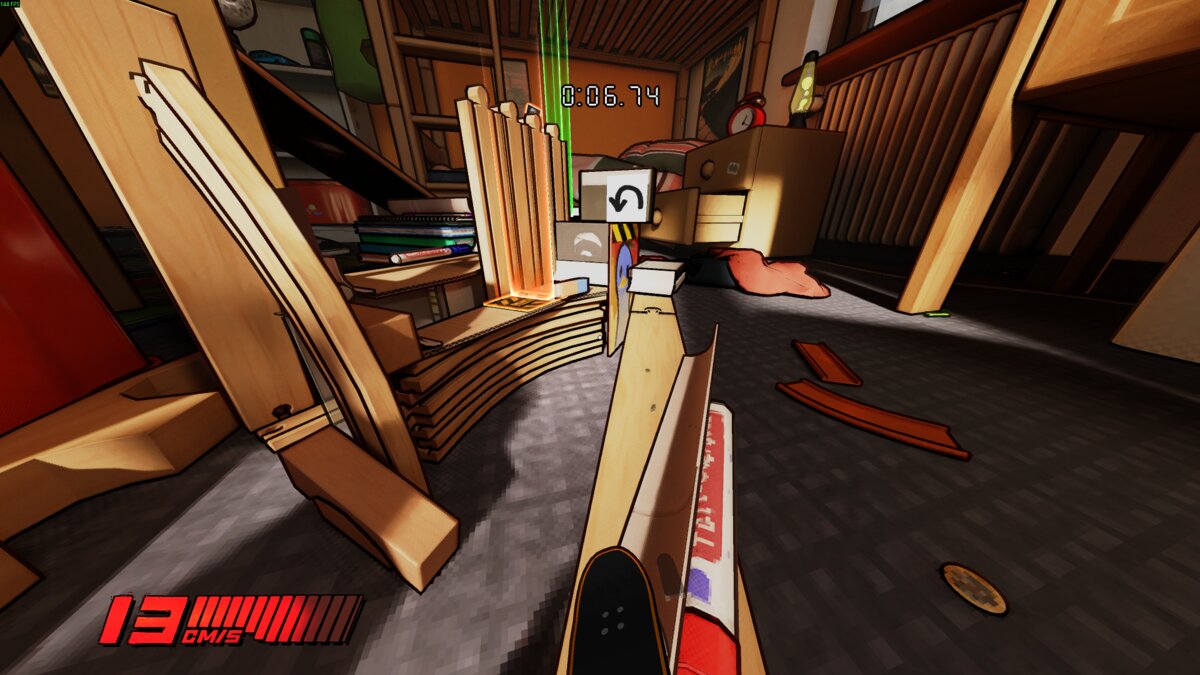You can trust VideoGamer. Our team of gaming experts spend hours testing and reviewing the latest games, to ensure you're reading the most comprehensive guide possible. Rest assured, all imagery and advice is unique and original. Check out how we test and review games here
Lara looks gorgeous. And we’re not talking about Alison Carroll, 23, from Croydon either. We’re talking about the real Lara. Well, the real virtual Lara. There she is, swaying her hips, running about with a lovely new sprinting animation (“People say it’s the best sprint animation they’ve seen in a game so far,” gushes Eidos’ publishing producer Adam Phillips), with a pole in one hand and a pistol in the other, with dirt on her face and on her legs and context sensitive foliage receding as if it were bowing in reverence to her presence. To be sure, this Lara, this new, motion captured (for the first time, with the wonderfully named US gold medallist gymnast Heidi Moneymaker), more realistic Lara, has never looked better.
We’re sitting in front of a cinema screen buried deep within the bowels of central London getting a sneak peek at mid-alpha code of Tomb Raider: Underworld’s second level, set in coastal Thailand. It’s a level that starts with Lara getting very, very wet. Before you get excited, it’s because she’s swimming in the ocean.
The water glistens on Lara’s skin as the sun goes to work drying her off. Calming music plays in the background, the kind of thing you’d expect to hear in an independent bookshop. Ambient sound effects ping off of our ear drums – birds perhaps, or other animals hidden deep in the jungle. She stops, surveying the impressive vista before her. We can see miles into the distance – the jungle, the open sea, sharks circling just beneath the see-through surface and an ancient temple that looks ominously like the kind of place Lara enjoys spending time in, are all visible in glorious detail.
She pushes her way through the dense foliage, just one of the many new context sensitive animations developer Crystal Dynamics has been hard at work implementing over the past couple of years. Birds fly off as she approaches, a breadcrumb style visual clue that you’re going the right way. She picks up dirt as she moves about – on her legs, her arms, her face. If she dives into water that dirt will wash off and she’ll once again emerge glistening. Rain, as we saw the last time we checked in with Underworld, will have the same effect.
“It looks very different from previous Tomb Raiders,” says Eidos UK marketing boss John Brooke. “Previous Tomb Raiders have been about closed tomb environments and it’s a testament really to the next-gen hardware that allows us to create this huge vista and this beautiful interactive world.”
We agree, there is much that is different about this particular Lara adventure. Rekindling memories of Ubisoft’s flawed gem Assassin’s Creed, Lara now has a new free climbing system with which players can pick their own paths through the game’s expansive levels. These ‘free walls’ can be any shape, convex, concave, whatever, making obsolete the straight ledge syndrome previous Tomb Raider games have suffered from, and have enabled Crystal Dynamics to really express themselves with level design. “There’s tons of different ways through that QA will find,” Adam says. “Some the design team didn’t realise were there but if they work they work.”
To supplement the new free climbing system Lara’s been given a set of new, silky smooth gymnastic moves that help her get around the game’s environments. She’s got a new Mario-esque wall jump, a new balance mechanic (use left and right on the thumb stick to adjust movement when on poles and the like), a safety grab, a context sensitive auto vault, the list goes on.
The grapple hook from Legend and Anniversary has been completely redesigned. Before Lara would have to jump, grapple and then swing. Now she can grapple first, move about and then attempt a jump, considerably reducing risk and opening up some interesting gameplay options. The grapple will bend around objects, too, whereas before it would retract if it touched anything, enabling her to use the power of physics to move otherwise immovable objects, like large boulders or pillars.
The upgrades extend beyond the gymnastic. Like before, she’s pretty handy in a scrap, and can now get up close and personal with new melee attacks to supplement her classic auto-targeting weapons fire, including kung-fu style flying kicks. As she makes her way towards the temple giant spiders attack, one of which latches itself on – she swats it off and stomps it into oblivion. Job done. Lara can use her guns while she’s using inanimate objects, like poles, too, with one hand firing and the other holding. Best of all? Finally Lara can now target two separate enemies while she’s dual wielding, something she’s hasn’t been able to do in the previous games.
We see this in practice as two huge tigers attack in the jungle. Switching to dual Uzis – Lara’s classic load-out – she targets each individually as she pumps bullet after bullet into the crazed beasts. Once dead, they remain there. Underworld is a persistent world, where enemies don’t magically disappear into the ground. Shocking.
Don’t like the idea of pumping bullets into endangered species? Seems like you’re not the only one. In response to players who have questioned why Lara doesn’t respect the exotic wildlife she encounters during her adventures, Crystal Dynamics has given her a tranquilliser gun, which, after firing a couple of darts, will send her enemies to sleep rather than animal heaven. How cute.
If, like us, you prefer more deadly forms of defence, you’ll be more interested in what’s called ‘adrenaline moments’ – where Lara slows down time and has the chance to land one shot kills. But you won’t be able to do this all of the time. You’ll only be able to do this when you’ve dealt “a lot of damage”, Adam explains.
All these improvements have been made with a single, simple design philosophy in mind, what Crystal Dynamics has coined ‘what could Lara do?’. She will automatically reach for gaps she can stick her fingers into, wherever they may be, she will push foliage out of the way, she will carry large objects that won’t fit into her back pack – all of this helps to create a much more realistic and convincing experience.
The Temple Lara has travelled to Thailand to raid is very similar in architectural style to Angkor Wat, the famous real world Cambodian temple that’s probably being overrun with gap year students as you read this. Indeed much of Underworld will be familiar to anyone who’s spent time in Cambodia or Thailand – the team visited both countries as part of the game’s development.
We’re shown Lara’s digital binoculars, which provide a perfect opportunity to show off the new photo-taking and sharing feature. You’ll be able to take a photo, setting the timer so you can move Lara into perfect position for a context sensitive pose or wave, and then share it with your friends via Xbox LIVE and PSN (the photo-sharing feature won’t be included in the Wii version of the game).
Why would you do such a thing? Eidos hopes players will use it to help each other out, to show friends a new route they’ve discovered, secret or hidden artefact. The idea is it will turn into something akin to a user-generated help service. It’s a nice idea, but it’s not something we imagine we’ll be spending much time dabbling with.
So far, so very good. Underworld is looking lovely, with some superb graphical effects and gameplay improvements. But we want to see some dank tomb raidering, elaborate puzzles and more switch pushes to satisfy even the most obsessive of, erm, obsessive compulsives, which is, after all, what’s best about Tomb Raider. Adam obliges, and enters the temple.
Two huge stone statues lay at the bottom of the temple – Shiva resting on top of her mistress Kali, two Hindu goddesses with arms outstretched in iconic pose. Viewed from Lara’s high position, we can see just how big the interior is, with more nooks and crannies than we’re capable of digesting in the time we’ve got to take it all in. The temple is one giant puzzle, and it’s up to the player to explore, work out what needs to be done to progress and execute.
A nearby lift provides the most obvious route down to the statues, but for some reason, it doesn’t work. Adam takes the opportunity to show us Underworld’s built in ‘help on demand’ system, accessed through Lara’s PDA. It reveals a hint, in this case a voice over that says: “Something is stopping the lift from working.” Yeah, we gathered that. Still stuck, we ask for a more detailed hint. “We don’t want to give you the exact solution,” Adam says. “We just want to give the user a good helping hand.” Might the help system prove too good to ignore, even when you might not really need it? Perhaps, but expect to be adequately rewarded via achievements if you resist the temptation.
Having freed the lift from the shackles of its chains, Lara takes a nice ride down, then bang, something goes wrong, time slows down and another ‘adrenaline moment’ kicks in. Unlike the player triggered adrenaline moment however, this QTE replacement is designed to give the player just enough time to assess the situation and, instead of waiting for a big button prompt, use the control scheme that the player has been using throughout the game to survive. Adam attempts to use the grapple to save Lara from certain death. He fails.
On the temple floor Lara is assaulted by a new enemy, the Naga – a mythical serpent-like creature that spits acid at anything that moves. But that’s not the only reason why they’re a fearsome foe. “One of the criticisms we’ve always had with Tomb Raider is that if you want to get away from an enemy you can quickly go up to a higher level,” Adam says. “These guys will actually climb the walls after you, in a first for Tomb Raider. They’re pretty dangerous.”
With the Naga sorted it’s on to the temple’s main puzzle – lowering Shiva’s arms. The trick is to place hidden gems (for the purposes of the demo they’re easy to find, expect to be searching long and hard) in Shiva’s palms, creating beams of light that, in true Raiders of the Lost Ark style, point the way to glory. The light needs to be properly reflected via a figure of eight puzzle with moving statues. Once appropriately positioned, the light causes Kali to push down her arms and reveal a secret passage underneath the temple. And it’s here that the demo ends.
Bar some minor niggles we’re hugely enthusiastic about Underworld. Lara’s swimming animation looks ropey, especially when compared with the quality motion-captured gymnastic moves she now has at her disposal. The melee combat, while welcome, looks incredibly fiddly and the camera suffered from the occasional fit during our demo. But there can be no doubt about the aesthetic quality, Lara, and the virtual world she is going to explore, has never looked better.
Gameplay wise though Underworld is Tomb Raidering as it should be. Plenty of puzzles, lots of swinging about and the occasional face off with oversized cats. It’s more of the same, but refined, improved, darker, perhaps grittier, and certainly more realistic. Subtle improvements like the free wall climb system and Lara pushing foliage and getting dirty, combine to impress.
We love the fact that Tomb Raider is still, to this day, a predominantly solitary, single-player experience. And a very intense one at that. Ambient sound, claustrophobic caverns, mysterious temples, all to be explored without the help of anyone. We can’t wait.
Tomb Raider: Underworld is due out for DS, PC, PS2, PS3, Wii, X360 on November 21 2008.
Tomb Raider: Underworld
- Platform(s): macOS, Nintendo DS, PC, PlayStation 2, PlayStation 3, Wii, Xbox 360
- Genre(s): Action, Adventure

/https://oimg.videogamer.com/images/11fa/tomb_raider_underworld_33.jpg)
/https://oimg.videogamer.com/images/05e7/tomb_raider_underworld_35.jpg)
/https://oimg.videogamer.com/images/4891/tomb_raider_underworld_23.jpg)
/https://oimg.videogamer.com/images/1b84/tomb_raider_underworld_22.jpg)
/https://oimg.videogamer.com/images/d64e/tomb_raider_underworld_30.jpg)
